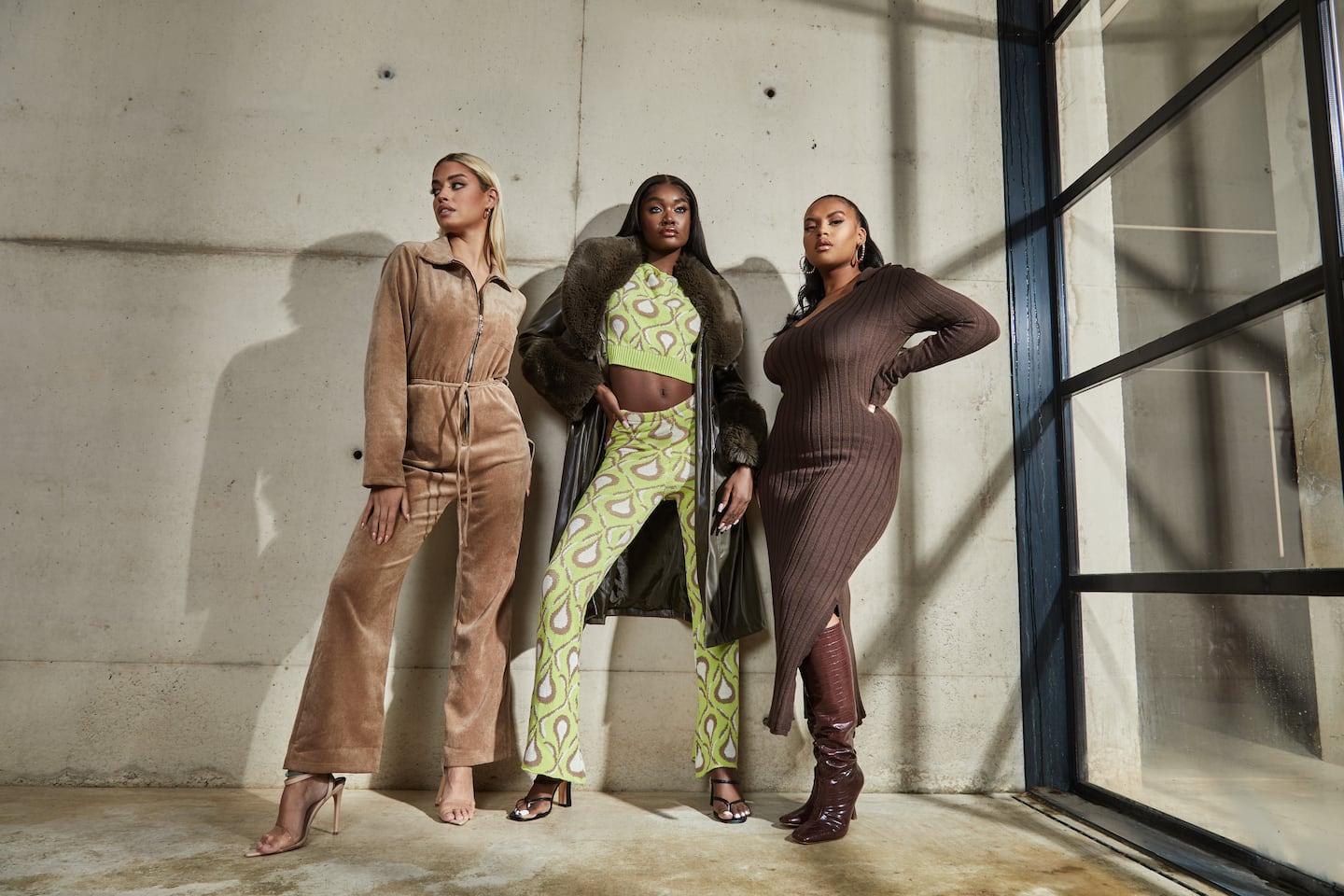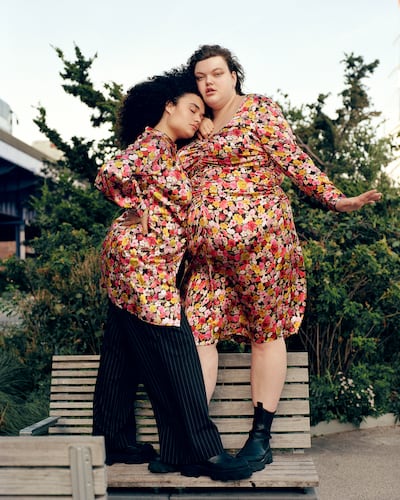
The Business of Fashion
Agenda-setting intelligence, analysis and advice for the global fashion community.

Agenda-setting intelligence, analysis and advice for the global fashion community.

I Saw It First, a UK-based online fast fashion brand, was able to pivot with lightning speed from going-out dresses to tie-dye sweatpants when the world locked down and back again as soon as restrictions eased. The company even managed to sell bikinis, denim shorts and form-fitting dresses from its “Love Island” collection this summer, when many UK customers were restricted from travelling much beyond their backyards. The brand had a strong start to the pandemic, too: though the company swung to a loss, sales for the full year ended Oct. 4 2020 were up 62 percent to £53.9 million (about $73.5 million).
For its pandemic-era success, I Saw It First, as well as competitors like Boohoo and Shein, can thank Gen-Z. The youngest generation of consumers can’t get enough of cheap, disposable clothes. Every year or two, a new e-tailer rises to the top, seemingly from nowhere; most recently it was Shein, famous for pumping out thousands of new looks daily. According to Google, the top four trending fashion brands among US Gen-Z consumers at the start of September were all companies built in the Chinese fast fashion seller’s mould: Edikted, Cider, Verge Girl and Adika.
And yet, shoppers in their teens and early 20s also have a reputation for ethical consumption. Gen-Z is “leading the charge when it comes to sustainability and climate change and really pushing brands to do better,” said Emma Chiu, global director at Wunderman Thompson Intelligence. They have helped popularise upcycling and reselling used clothes, due to become a $51 billion business by 2025 according to GlobalData.
Not to be dramatic, but [it’s because of] capitalism.
In other words, Gen-Z contains multitudes. Few brands are able to cater to the entire demographic, from fast fashion addicts to eco-warriors. Increasingly, they seem to be polarised toward one end or the other.
ADVERTISEMENT
Shoppers From Birth
Gen-Z grew up in a world where fast fashion, the internet, social media and economic uncertainty have always been the norm. Some cultural commentators believe that it’s hard for young consumers to step outside of that, whatever their core values.
What’s more, said Tahirah Hairston, fashion and beauty director at Teen Vogue, Gen-Z has largely connected with fashion in a different way to its generational predecessors. While older Millennials were exposed to aspirational brands and products through print magazine ads, today’s crop of young consumers sees them worn by influencers in fleeting content designed for a cursory scroll on Instagram.
It’s a model built to drive consumers toward impulse purchases and an endless cycle of disposable outfits, she said.
“Not to be dramatic, but [it’s because of] capitalism,” Hairston said. “What it means to shop and buy has to change, before we stop shopping fast fashion.”
Sustainable Fashion for All?
There is another reason many Gen-Zers prefer fast fashion over more eco-friendly alternatives: it’s cheap.
An I Saw It First dress can cost £15, even before the discounts applied from regular flash sales. Sustainable brands — which, to do justice to that label, must make clothes from low-waste, low-impact materials and manufacturing under fair working conditions — can rarely price their clothes so low.
ADVERTISEMENT
Even the handful of sustainable brands catering to younger audiences with trendy silhouettes can feel out of reach to a broke teenager. Reformation, one of the rare sustainable brands to find success with a broad audience, sells dresses for about $250.
“A Reformation dress is an impressive investment piece when you’re 17,” said Hairston.

Fast fashion brands can also offer a variety of affordable clothing for plus-size consumers, she added. However, that gap is closing: Reformation has offered sizes up to 3XL in its permanent collection since 2019 and on Friday, Scandi-cool brand Ganni launched a 10-piece capsule collection with the help of upmarket plus-size retailer 11 Honoré.
The Credibility Gap
Fast fashion retailers are increasingly looking to position themselves as sustainable.
In September, Boohoo disclosed the names of its 1,100 supplier factories and said it plans to sign the International Accord for Health And Safety in the Textile and Garment Industry, which is legally binding. This follows on from allegations of poor working conditions and below-minimum wages in the group’s Leicester, England supplier factories at the height of coronavirus lockdown in 2020.
Primark and Asos last month committed to slashing carbon emissions by 2030 and switching to more recycled materials and packaging in the coming years. Asos said it would tie executive pay to meeting environmental, social and governance goals, still relatively rare in the fashion industry. Primark, which promises to make all clothes “recyclable by design” by 2027, has couched its sustainability messaging in promises to keep prices low.
“I’m wearing one of our £2 T-shirts today,” Primark chief executive Paul Marchant told investors and analysts during a Sept. 17 presentation of the company’s ESG strategy. “This will be made from sustainable cotton from Autumn/Winter, but it’s still going to be £2 and we’re still making the same margin.”
ADVERTISEMENT
Questions remain about how exactly some of the retailers’ targets will be realised, or just how ambitious they really are. Asos, for example, pledges to be net-zero by 2030, but ambitions to cut carbon emissions are tied to variable factors like the number of customer orders and company profits, which any business would hope to grow over the years. (A spokesperson for Asos told BoF its emissions reduction targets have been independently verified by the Science Based Targets initiative — an organisation that oversees private-sector climate commitments — and allow the company to factor in the future growth it expects to see. When asked about how it will realise its sustainability ambitions within the next decade, a spokesperson for Primark said it has set “deliberately stretching” targets building on the company’s existing sustainability work, which will take time and collaboration with stakeholders such as suppliers, NGOs and industry partners to implement.)
But these developments nonetheless make sustainable fashion seem like a viable option for the average consumer.
There’s a gap in the market ... because there is this sort of assumption that Gen-Z is coming in at a certain price level.
“In one fell swoop, what Primark has done is reset that expectation around sustainability and also around price,” said Francesca Muston, vice president of fashion at trend forecasting agency WGSN. “They’re giving Gen-Z that choice to buy fashion and think about their values at the same time.”
An Untapped Market
In some cases, Gen-Z trends lend themselves to resale and experimental personal style, an alternative to mass-market products and constant newness at a similar price point. The rise of Y2K and 70s-inspired silhouettes has helped grow demand for vintage yet accessibly priced finds.
But fast fashion brands still remain a go-to source of current trends, even among Gen-Z consumers engaged in ostensibly more sustainable shopping habits like resale. A search for Shein on Poshmark turned up over 5,000 results, while brand names like Missguided and Boohoo-owned PrettyLittleThing rack up tens of thousands of search results on Depop.
“We do see people searching for fast fashion clothes. I think, though, it’s more [about] trying to find a certain trend or silhouette,” said Michael Ford, senior culture researcher at Depop.
Evolving Values
As Gen-Z matures and enters the job market, more of those who care about sustainability will be in a position to buy clothes in line with their values.
“There’s a gap in the market ... because there is this sort of assumption that Gen-Z is coming in at a certain price level, but there are lots of opportunities for different [price points],” said Muston. “It’s there to play for.”
And for those brands that can’t quite crack the two sides of Gen-Z, there’s hope: Generation Alpha is just around the corner.
Related articles:
Can Anything Shake Consumers’ Addiction to Fast Fashion?
Gen-Z Shopping: Separating Myth from Reality — Download the Case Study
Europe’s Parliament has signed off rules that will make brands more accountable for what happens in their supply chains, ban products made with forced labour and set new environmental standards for the design and disposal of products.
Fashion’s biggest sustainable cotton certifier said it found no evidence of non-compliance at farms covered by its standard, but acknowledged weaknesses in its monitoring approach.
As they move to protect their intellectual property, big brands are coming into conflict with a growing class of up-and-coming designers working with refashioned designer gear.
The industry needs to ditch its reliance on fossil-fuel-based materials like polyester in order to meet climate targets, according to a new report from Textile Exchange.